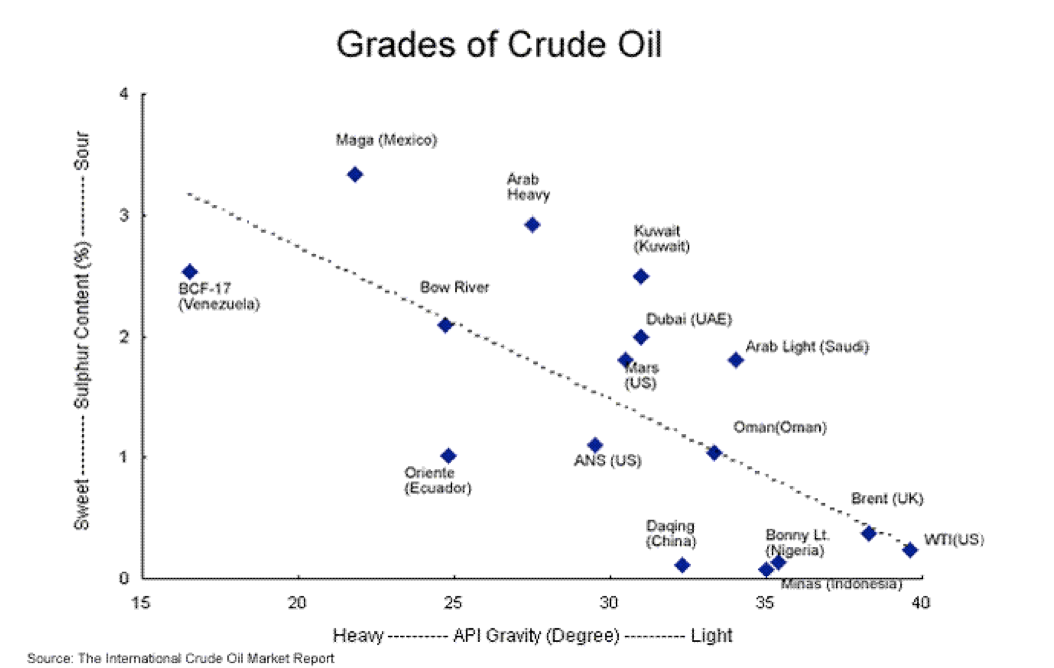In addition to those characteristics, crude oil is classified by a system that could make even a Starbuck’s barista’s head spin.
First, each crude has a name. You’ve probably heard of Brent and West Texas Intermediate, if not Bonny, Maga, or Oriente. Crudes are also grouped by grade or type – sweet, sour, light, medium, heavy – depending upon their sulfur content (that’s the sweet versus sour part; sweet is low in sulfur, sour is higher) and API gravity, which is the American Petroleum Institute standard for how heavy or light a petroleum liquid is compared to water. If the API gravity is greater than 10, the petroleum liquid is lighter and floats on water. If it’s less than 10, it’s heavier and sinks. Most values fall between 10 and 70 API gravity degrees.

